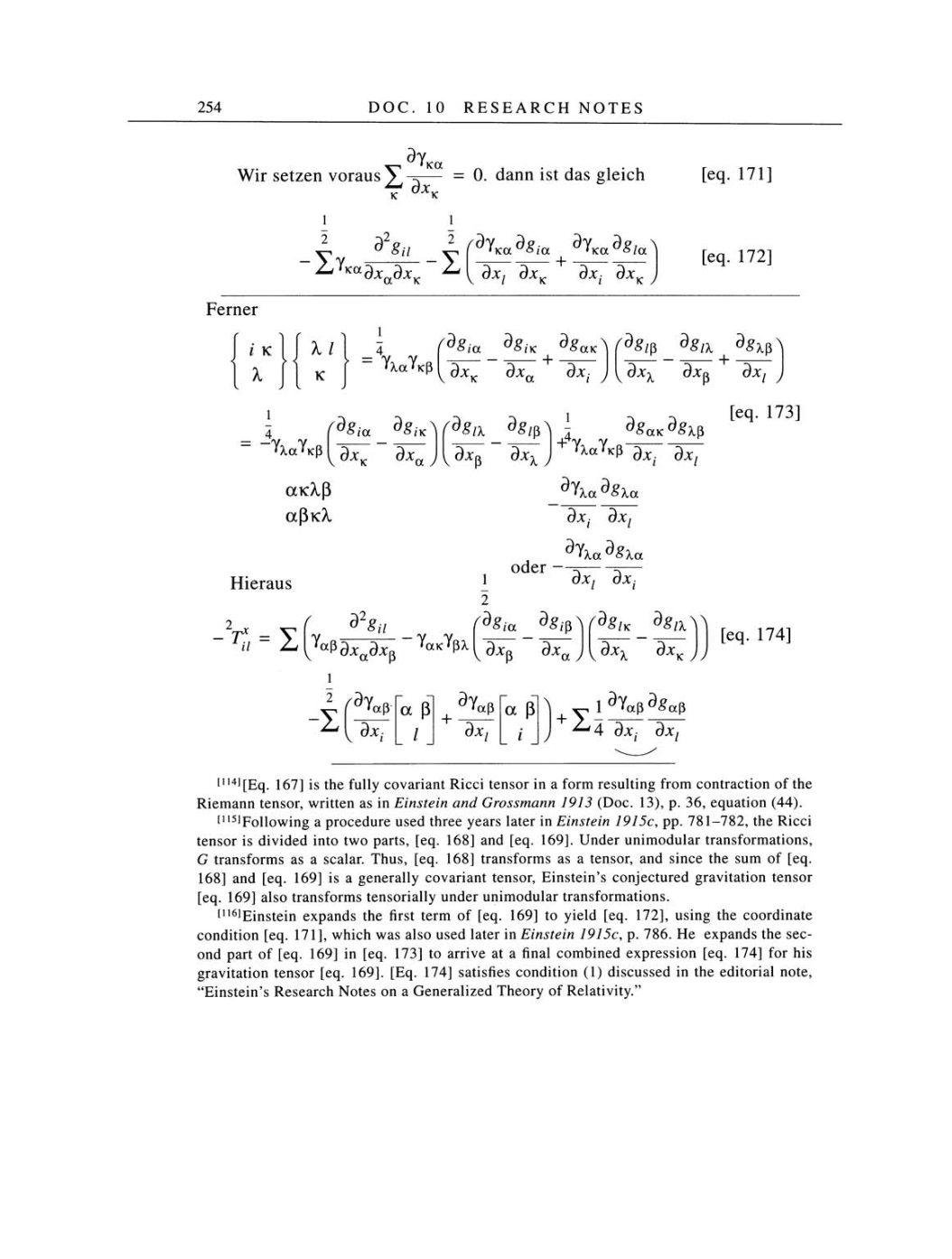254
DOC.
10
RESEARCH NOTES
dyKa
Wir
setzen
voraus
-
=
0.
dann ist
das
gleich
K
K
[eq. 171]
l
2
Xy
#8u
1
2 dy
Kadxad.xK
Ka
dSI
a
\
dxt
dx:
dxK
[eq.
172]
Ferner
J/k1L[
xi
1
*
J
r
7\
V
l
4
fi&ia
dSiK
d$
Meß
(XK
V
dx"
dxa
+
dg/ß
dgIX
dg
IX
dx:
J
l
+
\
ß
dxl
1
4
(d8ia
dgiK\(dg[X
dg,o\
1
Meß
V
dx"
5%a
K
J
___/ß
v
3jcß
dxX
J
aicXß
aßK?i
^8atc
f
YxaYcß
dxt dx,
^Xa
^§Xa
[eq. 173]
dx•
dxt
Hieraus
-n
=
l
yajßx
^Xa ^8\a
oder
-=r ^-
1
oxl dxi
2
fd8ia
3%V3«/k
d8l\V\
V
dxa dx
ß a
)
V
dxi dxK
[eq. 174]
J J
1
a ß
/
+
}K.
ß
dxt
a
ß
i
4
dxt dxl
[114][Eq.
167]
is
the
fully
covariant Ricci
tensor
in
a
form
resulting
from contraction of the
Riemann
tensor,
written
as
in
Einstein and Grossmann
1913 (Doc.
13),
p.
36, equation
(44).
[115]Following a
procedure
used three
years
later
in
Einstein
1915c,
pp.
781-782,
the Ricci
tensor
is
divided into
two parts,
[eq.
168]
and
[eq.
169].
Under unimodular
transformations,
G
transforms
as a
scalar.
Thus,
[eq.
168]
transforms
as a
tensor,
and since
the
sum
of
[eq.
168]
and
[eq.
169]
is
a
generally
covariant
tensor,
Einstein's
conjectured gravitation
tensor
[eq. 169]
also transforms
tensorially
under unimodular transformations.
[116]Einstein
expands
the
first
term
of
[eq.
169] to yield
[eq.
172], using
the coordinate
condition
[eq.
171],
which
was
also used later
in
Einstein
1915c,
p.
786.
He
expands
the
sec-
ond
part
of
[eq.
169]
in
[eq. 173]
to
arrive
at
a
final
combined
expression
[eq.
174]
for his
gravitation tensor
[eq.
169]. [Eq. 174]
satisfies condition
(1)
discussed
in
the editorial
note,
"Einstein's Research
Notes
on a
Generalized
Theory
of
Relativity."
